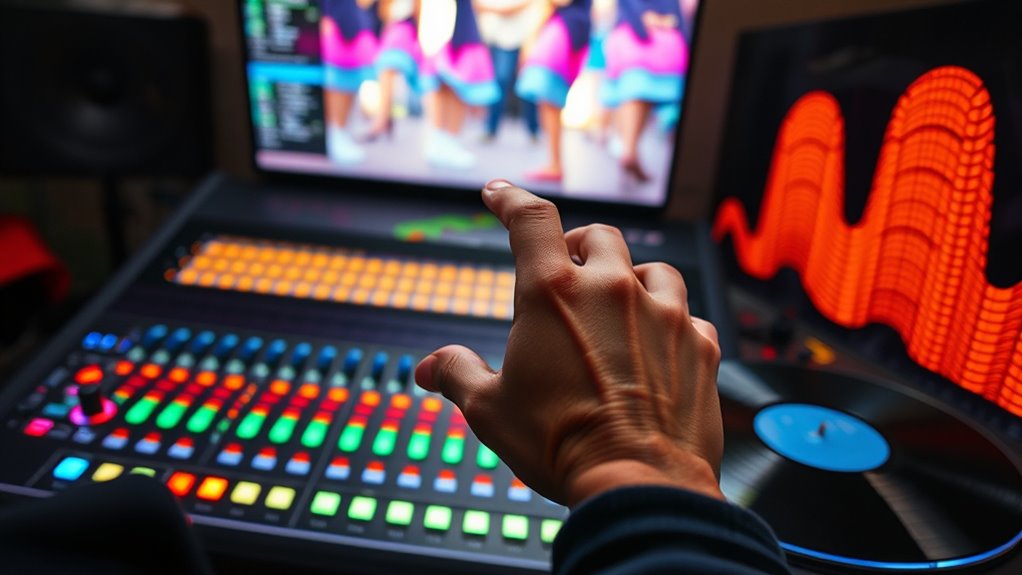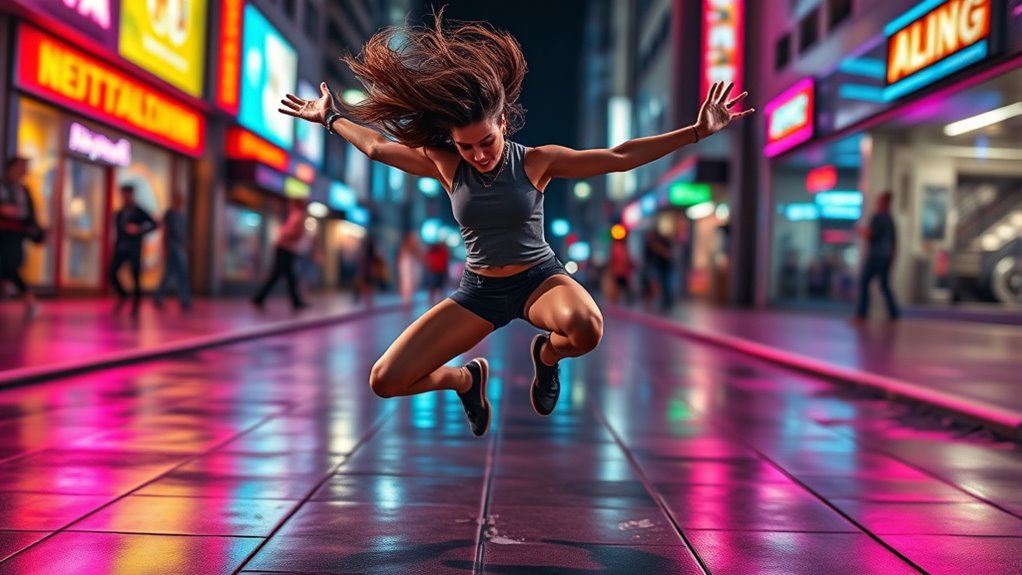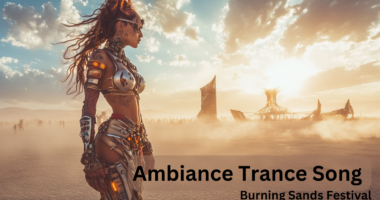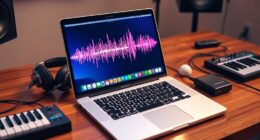To master cutting to the beat, focus on syncing your edits with music, dialogue, or scene energy. Pay attention to natural rhythms like heartbeat or pacing cues, and match your cuts to create a seamless flow that enhances emotion and keeps viewers engaged. Use quick cuts for excitement and longer shots for calm moments, adjusting the rhythm based on the scene’s mood. Keep honing your sense of timing—if you continue exploring, you’ll discover how rhythm transforms your storytelling.
Key Takeaways
- Synchronize cuts with musical beats or scene rhythm to enhance viewer engagement.
- Use quick cuts during energetic moments and longer shots for calm scenes to match emotional tone.
- Pay attention to natural cues like dialogue cadence or heartbeat to guide editing rhythm.
- Adjust pacing—fast for excitement, slow for intimacy—to evoke specific emotional responses.
- Practice experimenting with different rhythmic patterns to develop an intuitive sense of editing to the beat.

Have you ever noticed how some edits make a scene feel alive and engaging while others fall flat? It’s all about rhythm—the pulse that guides your cuts and shapes the viewer’s experience. When you cut in sync with the scene’s natural beat, it creates a seamless flow that pulls people in. Think of it like a dance; every move, every shift in tempo, should match the energy on screen. This isn’t about just cutting quickly or slowly but about finding the right timing that complements the visuals and sound. When you align your cuts with the rhythm of music, dialogue, or even the natural cadence of the scene, you amplify its emotional impact.
To do this effectively, you need to listen carefully to what’s happening. For example, if a character’s heartbeat accelerates during a tense moment, your editing should mirror that increase—perhaps a quick succession of cuts that heighten suspense. Conversely, in calm, reflective scenes, longer shots paired with gentle cuts can evoke a sense of tranquility. Your goal is to make each cut feel purposeful, almost like a musical beat that guides the audience through the story. When you cut to the beat, the viewer senses a harmony between visuals and sound, creating an immersive experience they don’t even consciously notice but feel deeply.
Rhythm in editing isn’t just about matching music. It’s about understanding the emotional rhythm of the scene. Fast cuts can generate excitement or chaos, while slower pacing can evoke intimacy or introspection. You have to be intuitive, recognizing when to speed up or slow down based on what you want the audience to feel. Sometimes, a sudden cut to the beat can jolt viewers awake, emphasizing a punchline or a shock. Other times, a prolonged hold on a shot allows tension to simmer. The key is to experiment and trust your instincts—notice how different rhythms evoke different responses. Developing a sense of timing also benefits from understanding how curiosity can drive emotional engagement in storytelling.
Ultimately, mastering rhythm in editing transforms your work from simple cuts into a dynamic language. When you cut to the beat, you’re not just changing images—you’re shaping emotion, guiding attention, and enhancing storytelling. Every decision, every beat, becomes a tool to make your scene resonate more powerfully. With practice, you’ll develop an ear for rhythm, learning how to craft edits that feel natural, compelling, and perfectly in tune with the story you want to tell.
Frequently Asked Questions
How Can I Identify the Dominant Rhythm in a Scene?
You can identify the dominant rhythm in a scene by paying close attention to the pacing of the visuals and sounds. Look for recurring patterns in movement, cuts, or beats in the soundtrack. Notice moments where cuts sync with music beats or significant actions. Trust your intuition—if something feels synchronized, that’s likely your scene’s dominant rhythm, guiding your editing choices to create a cohesive and engaging flow.
What Editing Software Best Supports Rhythm-Based Cutting?
You should try Adobe Premiere Pro or Final Cut Pro, as both support rhythm-based editing with features like beat markers and audio waveform displays. You can easily align cuts to beats, making your editing sync seamlessly with music. These programs also offer customizable keyboard shortcuts and plugins that help you analyze audio for rhythmic patterns, ensuring your cuts match the scene’s tempo and energy for a more engaging final product.
How Does Rhythm Influence Viewer Emotional Response?
Imagine a gentle whisper guiding your emotions—rhythm in editing does just that. When you sync cuts to a beat, it subtly stirs feelings, creating excitement, tension, or calm. Your audience naturally responds to these cues, feeling more connected and engaged. The right rhythm can evoke joy, suspense, or nostalgia without saying a word, making your story resonate deeper and leaving a lasting impression.
Can Unconventional Music Tempos Work With Visual Rhythm?
Yes, unconventional music tempos can work with visual rhythm if you align the visuals creatively. You might match rapid cuts to sudden tempo shifts or slow scenes to a more relaxed beat. Experimentation is key—by syncing visuals to the unique flow of the music, you create a compelling, unexpected experience that keeps viewers engaged and emotionally responsive, even when the tempo defies traditional expectations.
How Do Cultural Differences Affect Rhythm in Editing?
Did you know that 70% of viewers from different cultures interpret rhythm differently? Cultural differences deeply influence how you perceive editing rhythm. You might find fast cuts energizing, but others could see them chaotic. When editing for diverse audiences, you should consider cultural musical preferences and timing expectations. Adapting your rhythm guarantees your visuals resonate, making your work more inclusive and emotionally impactful across various cultural contexts.
Conclusion
By mastering rhythm in your editing, you can truly make your footage come alive, mesmerizing your audience with every cut. When you sync your edits to the beat, you create a seamless flow that feels natural yet compelling. So, next time you’re in the editing room, ask yourself: are you letting the music guide your storytelling, or are you missing out on the power of rhythm to elevate your craft?










